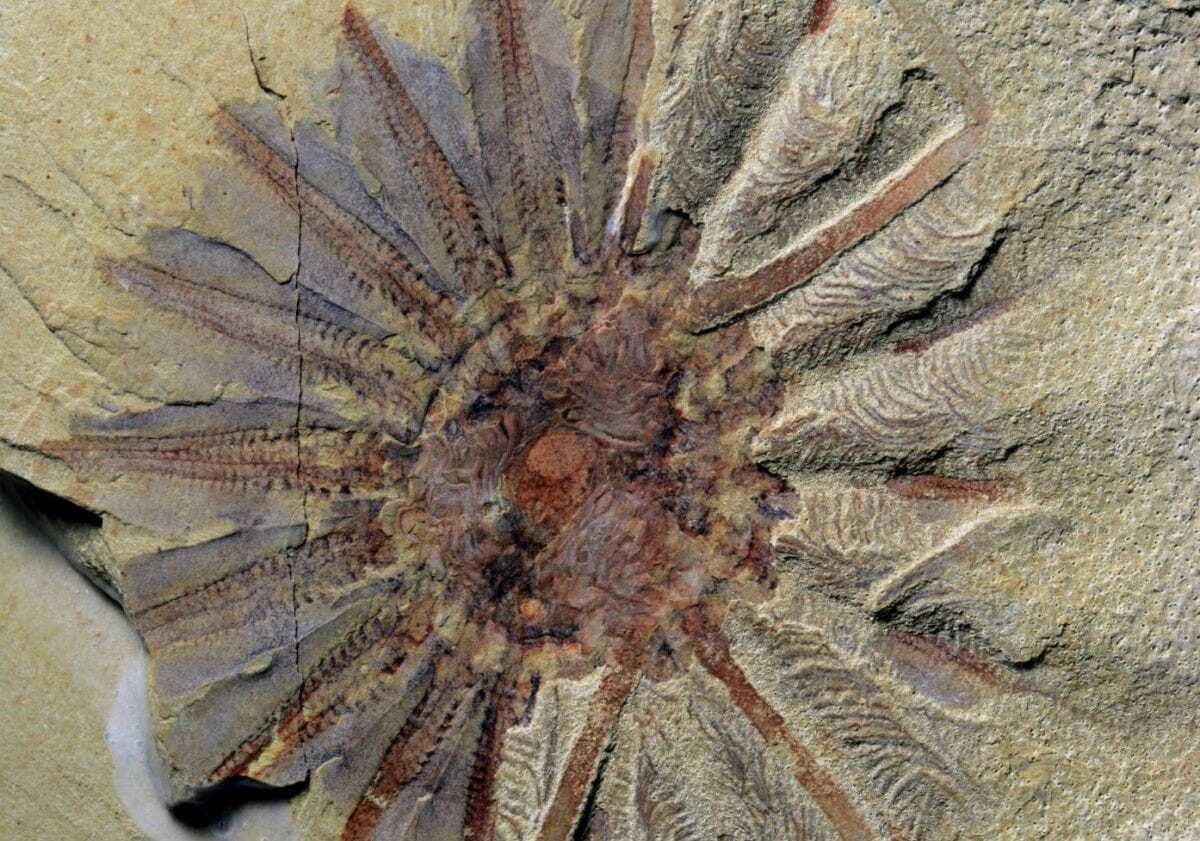One of the ocean’s little known carnivores has been allocated a new place in the evolutionary tree of life after scientists discovered its unmistakable resemblance with other sea-floor dwelling creatures.
Comb jellies occupy a pivotal place in the history of animal evolution with some arguing that they were among the first animals to evolve. Now an international team of palaeontologists have found fossil evidence that proves comb jellies are related to ancestors that sat on the sea floor with polyp-like tentacles.
As reported today in Current Biology, researchers from the University of Bristol, Yunnan University in China and London’s Natural History Museum, compared a 520 million-year-old fossil with fossils of a similar skeletal structure and found that all evolved from the same ancestors.
The fossil, set in a yellow and olive coloured mudstone and resembling a flower, was found in outcrops south of Kunming in the Yunnan Province, South China by Professor Hou Xianguang, co-author of the study.
Several amazingly preserved fossils have been unearthed from outcrops scattered among rice fields and farmlands in this part of tropical China in the last three decades.
It has been named Daihua after the Dai tribe in Yunnan and the Mandarin word for flower ‘Hua’, a cup-shaped organism with 18 tentacles surrounding its mouth. On the tentacles are fine feather-like branches with rows of large ciliary hairs preserved.
“When I first saw the fossil, I immediately noticed some features I had seen in comb jellies,” said Dr Jakob Vinther, a molecular palaeobiologist from the University of Bristol. “You could see these repeated dark stains along each tentacle that resembles how comb jelly combs fossilise. The fossil also preserves rows of cilia, which can be seen because they are huge. Across the Tree of Life, such large ciliary structures are only found in comb jellies.”
In today’s oceans, comb jellies are swimming carnivores. Some of them have become invasive pests. They swim using bands of iridescent, rainbow coloured comb rows along their body composed of densely packed cellular protrusions, known as cilia. Their hair-like structures are the largest seen anywhere in the tree of life.
The researchers noticed that Daihua resembled another fossil, a famous weird wonder from the Burgess Shale (508 million years old) called Dinomischus. This stalked creature also had 18 tentacles and an organic skeleton and was previously assigned to a group called entoprocts.
“We also realised that a fossil, Xianguangia, that we always thought was a sea anemone is actually part of the comb jelly branch,” said co-author Prof Cong Peiyun.
This emerging pattern led researchers to see a perfect transition from their fossils all the way up to comb jellies.
“It was probably one of the most exhilarating moments of my life,” said Dr Vinther. “We pulled out a zoology textbook and tried to wrap our head around the various differences and similarities, and then, bam!–here is another fossil that fills this gap.”
The study shows how comb jellies evolved from ancestors with an organic skeleton, which some still possessed and swam with during the Cambrian. Their combs evolved from tentacles in polyp-like ancestors that were attached to the seafloor. Their mouths then expanded into balloon-like spheres while their original body reduced in size so that the tentacles that used to surround the mouth now emerges from the back-end of the animal.
“With such body transformations, I think we have some of the answers to understand why comb jellies are so hard to figure out. It explains why they have lost so many genes and possess a morphology that we see in other animals,” added co-author Dr Luke Parry.
Until around 150 years ago, zoologists had considered comb jellies and cnidarians to be related. This theory was challenged more recently by new genetic information suggesting comb jellies could be a distant relative to all living animals below the very simple looking sponges.
The authors of this new study believe their findings make a strong case for re-positioning the comb jelly back alongside corals, sea anemones and jellyfish.
Header Image – This is the holotype specimen of Daihua sanqiong. Credit : Photograph by Yang Zhao





